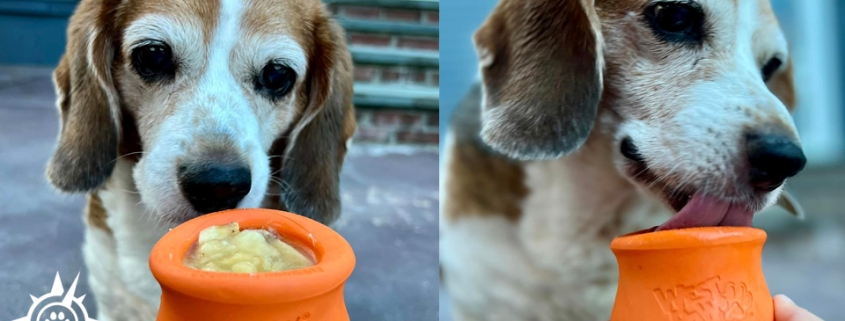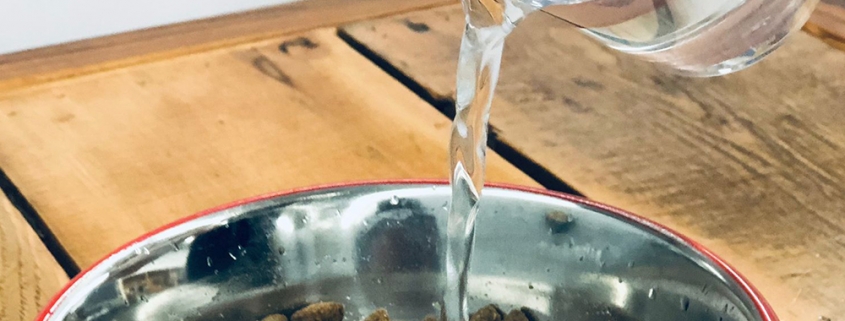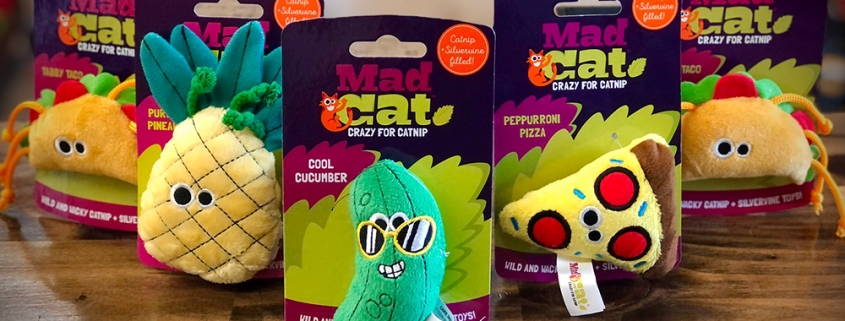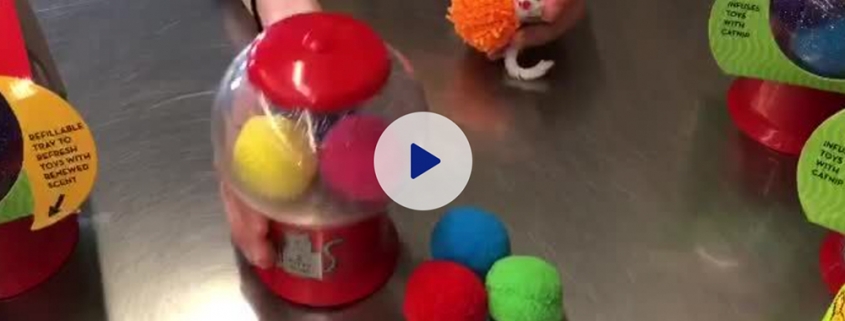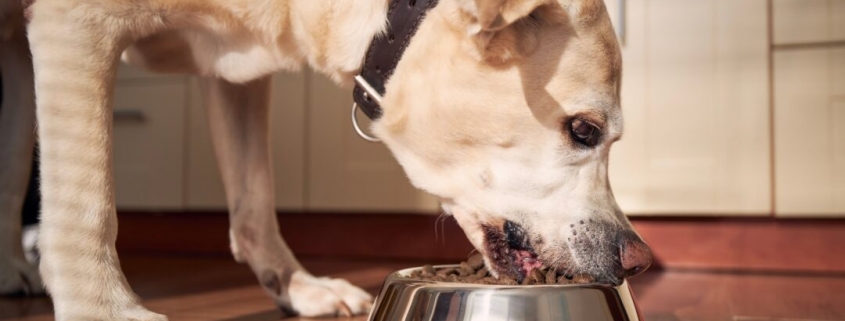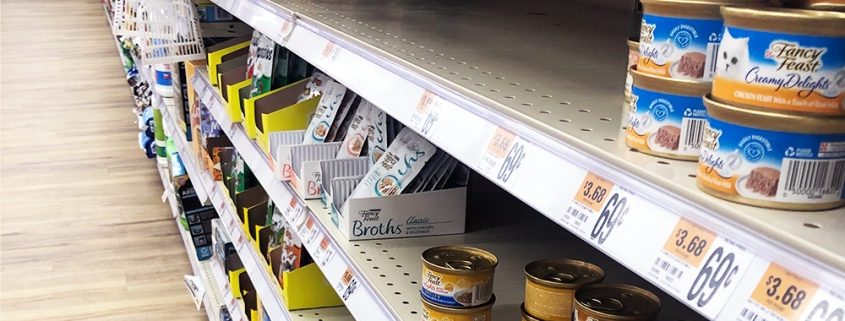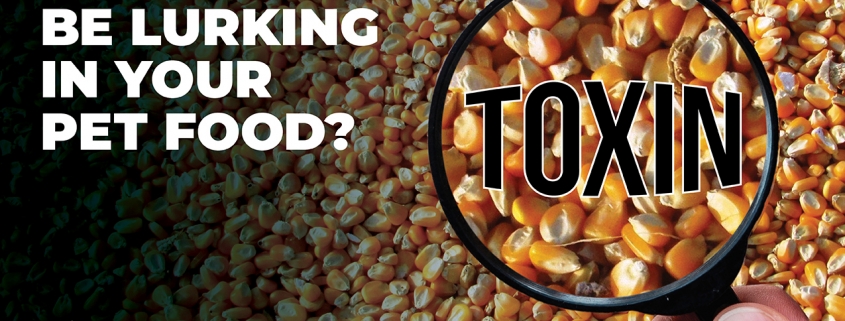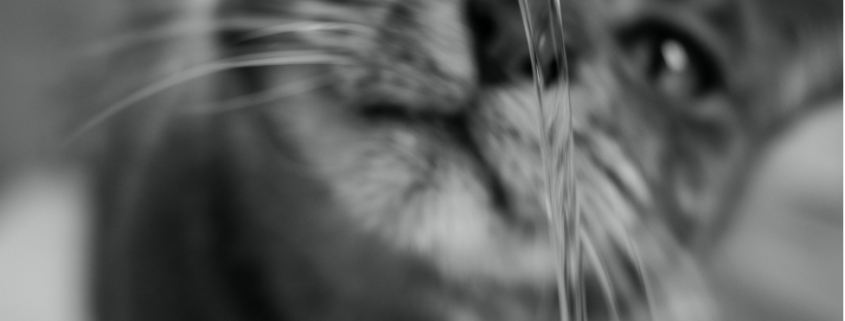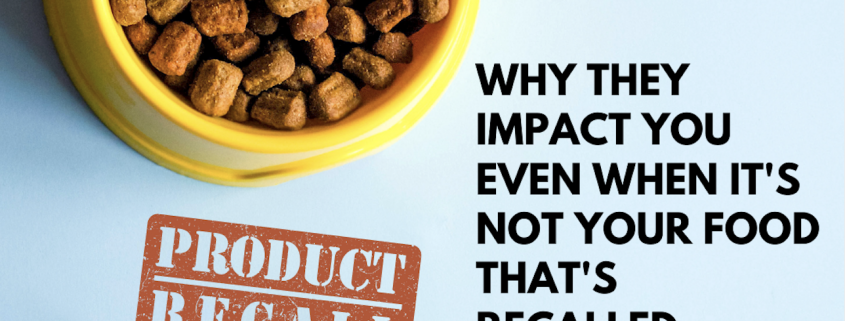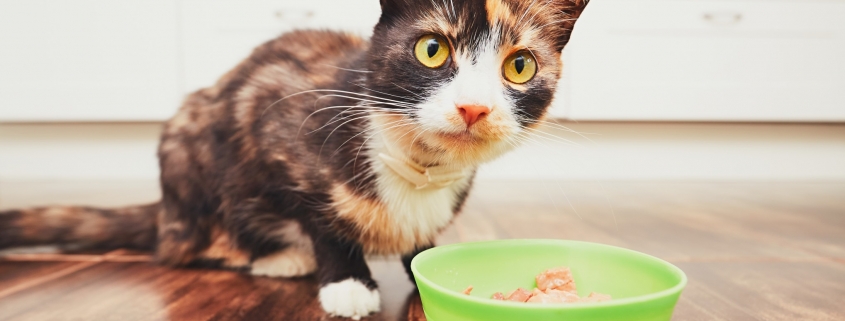Bowl Building Tip #1: Just Add Water
/ Jenna HarrisonProper hydration impacts your pet’s health at many levels and is the most powerful, least expensive improvement you can make to their diet. READ MORE
If your cat just doesn’t enjoy catnip, try Silvervine!
/ NorthPoint PetsFACT: Roughly half of all household cats do not respond to catnip. If this includes your feline friend, this Japanese medicinal herb might be your cat’s new obsession!
Refresh Your Cat’s Old Toys with a Catnip Infusion!
/ NorthPoint PetsHas your cat lost interest in his or her “old” toys? This might just change their mind!
Exploring the Pandemic Pet Food Supply Chain Challenges
/ Jenna HarrisonHave you noticed empty shelves in your grocer’s pet food aisle? Are you having a hard time finding your pet’s food, even from online retailers? Discover the reasons behind these shortages and learn why independent pet stores offer a reliable solution to your pet food supply concerns.
The Covid-19 Supply Chain Ripple
Some pet food brands, including Nestle Purina, Royal Canin, FreshPet, and even prescription diets, continue to see delays and shortages amidst the pandemic.
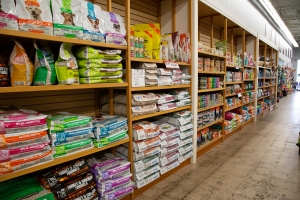
Shelves remain fully stocked at NorthPoint Pets despite supply shortages at large retailers.
These shortages have occurred everywhere from big box stores to vet offices. Inclement weather, ingredient sourcing delays, labor shortages, and importation delays due to COVID safety measures have all contributed to empty shelves. Some formulas have been modified or discontinued altogether due to sourcing challenges. Additionally, the sky-rocketing adoption rates have raised demand for pet food. Together these factors complete this equation for out-of-stock products.
Advantages of Small Independent Retailers
Unlike supermarkets and big box stores, independent pet stores have weathered the COVID storm with fully stocked shelves and a greater selection throughout. Small retailers have closer relationships with a variety of distributors. Consequently, they have greater access to more products if one distributor runs out. Plus, indie pet staff can provide up-to-date information – meaning they’re more likely to have the answers to your questions and solutions for your concerns regarding your pet’s diet. If you’re concerned about your pet’s food supply, stop in to your local small pet retailer for honest, appropriate recommendations and accurate information.
To read more about this ongoing dilemma, click here.
Don’t despair if you’re worried about your pet’s food supply. Independent pet stores offer a reliable solution with fully stocked shelves and a wide selection of products. Visit your local small pet retailer for honest recommendations, appropriate solutions, and accurate information.
References:
https://www.petproductnews.com/news/purina-and-freshpet-pet-food-shortages-are-impacting-stores-in-pennsylvania/article_d5aba6b6-778a-11eb-a16e-ebee87dc56ec.html
https://www.nj.com/coronavirus/2021/02/panic-buying-for-pandemic-puppies-is-just-part-of-the-reason-for-petfood-shortage.html
Everything You Need to Know About Aflatoxin and Your Pet’s Food
/ Nicole Cammack and Morgan HuntRecalls due to aflatoxin contamination have resulted in the retrieval of hundreds of thousands of pounds of pet food. Tragically, these recalls have caused the loss of hundreds, and possibly thousands, of beloved pets. You might be wondering why such recalls continue to occur. The truth is that preventable measures can be implemented to avoid recalls associated with contaminants like aflatoxin.
When pets fall ill or pass away, it can be incredibly frustrating for pet parents and those involved in the pet industry. Aflatoxicosis is the term used to describe illness caused by aflatoxin. Diagnosing it can be challenging as the associated symptoms are considered ‘non-specific.’ In other words, they are vague and can overlap with those of various other diseases and conditions. As a pet owner, what essential information should you be aware of?
Let’s dive into the fundamentals:
What are Aflatoxins?
Aflatoxins, produced by fungi such as Aspergillus flavus and Aspergillus parasiticus, belong to a group of toxins that can be found on various agricultural crops including corn, rice, wheat, oats, peanuts, cottonseed, and tree nuts, among others. These toxins are particularly prevalent in warm and humid regions of the world and are permitted in both human and pet food at very low levels. However, the risk and level of contamination increase under specific temperature and moisture conditions.
Four types of aflatoxins, namely B1, B2, G1, and G2, have the potential to contaminate food. Among them, aflatoxin B1 is the most concerning due to its hepatotoxic nature, meaning it is toxic to the liver and can cause severe illness and even death in pets. Aflatoxicosis, often resulting from cumulative exposure to contaminated pet food, can worsen over time. Consequently, contaminated products may remain in circulation for weeks or even months before the source is identified, leading to a recall announcement.
Previous incidents in 2005 and 2012 witnessed multiple recalls of aflatoxin-contaminated pet food, resulting in numerous pets falling critically ill or losing their lives after consuming these products. More recently, Sunshine Mills in 2020 and Midwestern Pet Foods in 2021 faced extensive recalls due to the presence of deadly aflatoxin contamination.
What signs should I look for in my pet?
If you suspect your pet has consumed pet food contaminated with aflatoxin there are several signs you should watch for. Be sure to alert your veterinarian and seek medical attention for your pet should any of these signs develop.
Common Clinical Signs with Aflatoxicosis:
- Lethargy (sluggishness, tiredness, lack of excitement)
- Food Aversion or Anorexia (not wanting to eat)
- Vomiting, or vomiting blood
- Jaundice (yellow discoloration of the eyes, gums, or skin)
- Diarrhea or Melena (dark bloody stool, sometimes looks like coffee grounds)
Detecting Aflatoxicosis: Veterinary Tests and Symptom Recognition
Your veterinarian or emergency clinic will conduct various tests to assess the health of your pet. In many cases, liver function tests, which are part of a comprehensive blood chemistry panel, can provide valuable clues for detecting aflatoxicosis. Elevated liver values, such as ALT (alanine transaminase) and AST (aspartate transaminase), are often observed in the test results. Additionally, increased total bilirubin concentrations and prolonged prothrombin time (PPT) may also be indicative of aflatoxicosis.
Pet owners frequently notice changes in their pets’ behavior, food intake, or energy levels around the time these symptoms begin to manifest. It is crucial to inform your veterinarian about any such changes as they can provide essential insights. Even small details can contribute to a better understanding of the overall picture. It’s important to note that unlike humans, pets consume the same diet consistently, which results in faster toxin accumulation in their systems. Consequently, their bodies may have limited time and capacity for detoxification in such situations.
Mitigating Aflatoxin Contamination in Pet Food
Corn is widely recognized as a major contributor to aflatoxin contamination in pet food, making grain-free pet foods increasingly popular in recent years. However, it’s important to note that aflatoxin contamination is not limited to corn and remains a potential risk regardless of the type of pet food or its ingredients. To mitigate this risk, pet food manufacturers should diligently test all ingredients and final products for aflatoxin and other contaminants. Unfortunately, some manufacturers neglect this crucial step, leading to the presence of contaminated products in the market.
As a responsible pet owner, you can take action by contacting your pet food company or inquiring at the store where you purchase your pets’ food to ensure that the manufacturer implements adequate safety checks. Although safety checks are not currently mandated by law, contamination with aflatoxin would necessitate a product recall. Therefore, it is in the best interest of any pet food manufacturer to prioritize implementing rigorous safety measures.
Factors Influencing Pet Susceptibility to Aflatoxicosis
Remember that every pet, as well as every person, is unique, leading to various factors that can impact a pet’s susceptibility to aflatoxicosis and other conditions. These factors include genetics, age, hormonal status, nutritional status, exercise, and other underlying illnesses, all of which can influence the severity of aflatoxicosis. In essence, even if pets consume the same food, their reactions may differ.
Taking Action When Suspecting a Pet Food Recall
If you are feeding a currently recalled food, or if you suspect your pet may be exhibiting signs of aflatoxicosis:
- Contact your veterinarian immediately
- Save any remaining pet food you have
- Save pet food packaging and take pictures to document date and lot codes
- Bring the packaging and pet food to your veterinarian who can help you file a complaint with the FDA and send samples out for laboratory testing if needed
If you want to know more about the types of questions you should ask your pet food company you can click here.
About the Authors:
Morgan Hunt
Meet Morgan, a Veterinary Assistant/Technician at Branford Veterinary Hospital and a Pet Problem Solver at NorthPoint Pets & Company! She is a Certified Veterinary Technician. Her interests in the animal world are mainly behavior & nutrition. She has a Pit Mix named Tyson and a Dalmatian named Pongo who keep her on her toes learning more and more every day.
Nicole Cammack
Nicole is the founder & owner of award-winning NorthPoint Pets & Company, in Connecticut. She is also the Founder & CEO of Undogmatic Inc. Her undergraduate and graduate education includes biology, chemistry, business and nutrition. She has worked in the pharmaceutical industry on multiple R&D projects and has had the privilege to learn from leading international figures in the human and pet health industry. She regularly lectures at national conferences, including federal, state, and municipal K9 events. Her current research involves identifying pathogenic risk factors and transmission among raw fed pets through a comprehensive worldwide survey.
Tips to Boost Your Cat’s Water Intake
/ Nicole Cammack and Jenna HarrisonAs a cat owner, you want to ensure that your feline companion stays hydrated and healthy. However, some cats can be quite picky when it comes to their water options, leading to reduced water intake. In this blog post, we’ll share some valuable tips to help increase your cat’s water consumption. From strategic bowl placement to choosing the right materials and incorporating running fountains, these suggestions will not only optimize your cat’s hydration but also improve their overall well-being.
Strategic Bowl Placement
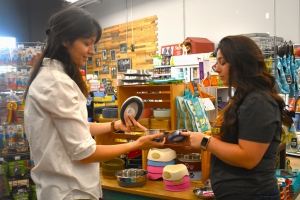
Our expert team can help you choose the best bowl for your cat.
Cats generally prefer to have their water bowl away from their food bowl. Placing the water bowl on the opposite side of the room or in a separate area can encourage cats to drink more. By separating their food and water sources, you address their instinctual behavior and promote higher water intake. Try experimenting with different locations to find the one that suits your cat’s preferences best.
Offer Multiple Water Bowls
In addition to strategic placement, providing multiple water bowls throughout your home can further entice your cat to drink. This approach ensures that water is easily accessible regardless of which area your cat prefers to spend time in. It’s also helpful for households with multiple cats, as each feline can have their own designated water bowl. Consider placing bowls in various rooms or levels of your home to make it convenient for your cat to find water wherever they roam.
Choose the Right Bowl
The type of bowl you use can significantly impact your cat’s willingness to drink. Cats can experience whisker fatigue when their whiskers touch the sides of their bowl, leading to aversion to both food and water. By selecting wide and shallow bowls, you eliminate this discomfort and create a more inviting drinking experience for your cat.
Consider Running Water Fountains
You’ve likely seen adorable videos of cats drinking from kitchen and bathroom faucets. Many cats prefer running water, and a water fountain can mimic the appeal of a flowing stream. Running water fountains attract cats and encourage them to drink more. The continuous circulation helps maintain freshness and provides a sensory experience that entices even the pickiest of cats. Additionally, the sound and movement of the water can create an interactive and engaging environment for your cat, making hydration more enjoyable.
Expert Tip: Don’t be discouraged if your cat doesn’t drink from the fountain right away. Like most new things, your cat needs to adapt to the new fountain over time. It’s normal for a cat to take 4-6 weeks to begin using the new fountain. If you do not have success after 6 weeks, try moving the fountain to a different area of the house.
Maintain Clean Bowls and Fountains
Tiny dust and dirt particles floating in stagnant water will deter a cat from drinking from it. Additionally, water bowls will start to grow bacteria in less than 24 hrs, so it’s imperative to take proper precautions for cleanliness and safety. Wash your cat’s bowls with hot soapy water at least once a day. Water fountains should be disassembled at least once every 7-10 days so that all parts can be cleaned thoroughly. Be sure to replace the filter every 4-6 weeks, or more often depending on your water quality. Fill with fresh, clean water. We recommend using room temperature water because cat’s don’t generally prefer cold water.
Feed a Moisture-Rich Diet
Cats naturally have a remarkably low thirst drive and have adapted over centuries to thrive in dry environments. Additionally, cats’ tongues are incredibly inefficient for drinking water because they cannot scoop the water into their mouth. For these reasons, their bodies have evolved to absorb moisture through food sources. Therefore, it’s imperative to offer your cat a diet high in moisture. Canned wet food or premade raw food options offer optimal nutrition with high moisture and minimal carbohydrates. Since most feline ailments result from dehydration, a high moisture diet sets your cat up for whole body health and longevity.
Conclusion
Ensuring your cat’s proper hydration is crucial for their overall health and well-being. By implementing these tips, you can help your feline friend stay hydrated and prevent potential health issues associated with inadequate water intake. Remember to strategically place water bowls away from food, offer multiple water sources, choose suitable bowl materials, and consider investing in a running water fountain. Additionally, don’t forget to change the water daily and keep the food and water dishes clean to maintain optimal freshness. By following these guidelines, you’ll promote a healthy and happy lifestyle for your beloved cat.
Must Read: Aflatoxin Pet Food Recalls
/ Nicole R. CammackThe recall of SportMix dog and cat foods may impact you even if you’re not feeding the food being recalled.
UPDATE: JANUARY 25, 2021
The FDA released an update which indicated the recall has expanded internationally. Further, based on the number of reported deaths and illnesses as of this date this is likely the largest documented aflatoxin recall within the pet industry.
UPDATE: JANUARY 11, 2021
The FDA released an update on the original recall announcement adding over 1,000 lots of pet food manufactured by Midwestern pet. Affected foods were made in their Oklahoma facility. More than seventy deaths have been reported with an additional 80+ pets ill.
This recall indicates there are some clear quality control issues within Midwestern Pet’s manufacturing operations. As foreshadowed in the original article below, it likely meant that they were not inbound testing their ingredients for safety and adequacy. Midwestern was likely not outbound testing their final product for safety and nutritional adequacy either. The recall expansion supports this and we can expect the number of reports of ill pets to increase, as well as further expansion of this recall.
ORIGINAL ARTICLE: JANUARY 1, 2021
Recently a recall of SportMix dog and cat foods due to ‘potentially fatal levels of aflatoxin’ was announced by the FDA & Midwestern Pet Foods. SportMix is manufactured by Midwestern Pet Foods who also makes well-known brands Earthborn, ProPac, Venture, Wholesomes, CanineX and most recently their ancient grain food Unrefined. The first FDA update indicated 28 dogs reported dead, and at least 8 more ill, with 70+ ill and 80+ dead as of the second announcement. It’s likely the FDA announcements will result in more reported cases.
If you are feeding SportMix, you can check the most recent FDA announcement for lot and date codes to see if your food has been recalled. If your pet is ill, be sure to contact your veterinarian right away. You can learn more about filing a Pet Food Complaint with the FDA here: Report A Complaint.
The recall was prompted when the Missouri Department of Agriculture tested multiple SportMix products which contained very high levels of aflatoxin. Currently, the Missouri Department of Agriculture and the FDA are investigating the incident to determine how and why the foods contained such high levels of aflatoxin.
What Is Aflatoxin?
Aflatoxin is produced by a mold Aspergillus flavus. Aflatoxin is dangerous at high levels, although low levels exist in common foods we and pets eat. These foods include nuts and grains (including ancient grains!) such as peanuts, and corn. In pet food, the most common culprit is corn, however numerous recalls have been announced over the years for a variety of human and pet products.
The FDA states that pets are more at risk of aflatoxin poisoning because they do not eat a varied diet like humans do. In other words, the cumulative effect of eating food with already high levels of aflatoxin makes the situation worse.
What symptoms should I look for?
The FDA States:
“Pets with aflatoxin poisoning may experience symptoms such as sluggishness, loss of appetite, vomiting, jaundice (yellowish tint to the eyes, gums or skin due to liver damage), and/or diarrhea. In some cases, this toxicity can cause long-term liver issues and/or death. Some pets suffer liver damage without showing any symptoms. Pet owners whose pets have been eating the recalled products should contact their veterinarians, especially if they are showing signs of illness.”
Why this recall should concern you:
Aflatoxin at dangerously high levels in pet food is preventable from a manufacturing standpoint. If a manufacturer is testing their inbound ingredients and outbound testing their final product, dangerously high levels of aflatoxin should never make it to the marketplace. The fact that it has been found in 9 different lots of pet food is concerning and raises several questions:
- Was Midwestern inbound testing their raw ingredients to ensure that they were safe? In this case, it is likely that the ingredient containing the aflatoxin was corn.
- Note: The past year there were agricultural reports indicating high levels of aflatoxin in some crops, meaning that if Midwestern was purchasing from these regions they should have been testing for aflatoxin, and other contaminants more frequently.
- Was Midwestern outbound testing their final products to ensure that they were safe and nutritionally adequate?
- What types of quality control does Midwestern have in place to prevent problems like this from occurring?
- What steps does Midwestern take to clean machinery and storage containers in an effort to prevent cross contamination to other products made in the same facility?
- What other products were made in this facility during and after the recalled product was made?
- Does Midwestern hold a sample of each lot of food produced so that it may be tested if issues arise such as this?
Another Lesson?
The recall of SportMix dog and cat foods is another lesson to both retailers and pet owners that it is important to ask questions of the brand of food you feed your pets. You can learn more about those questions here. I am well aware of many who think that I’m being unreasonable when asking the questions I ask, or pushing for changes in regard to food safety and nutrition adequacy testing – but the reason why I do it is because things like this are PREVENTABLE. Sure, implementing nutritional adequacy testing is inconvienent if you’re a manufacturer – but it’s worse when pets get sick or die because you didn’t implement that testing. As a retailer it’s inconvenient to have to constantly reach out to pet food companies – but it’s worse when a pet experiences a problem because I didn’t do my homework. It’s clear that many companies do not check all the boxes, but I can do my best to support companies that are doing their best to improve. I can also educate my clients and customers on who does and does not have certain safety/nutritional adequacy measures in place. I can also tell them who refuses to answer questions!
Simply said, knowing what quality control measures a manufacturer has or does not have can make a world of difference. While we don’t know if this recall will be expanded to other lots, or even brands – it is not out of the realm of possibility. For example, if Midwestern truly did have one batch of a contaminated ingredient such as corn, and does have proper quality control measures in place (e.g. proper cleaning of machinery and storage containers to prevent cross contamination) then other products may not be affected. If they do not have adequate measures in place (or failed to follow them) it is possible other products will be affected.
In either case, the question still remains: how did the contaminated food end up in the marketplace to begin with? Was it because they were not inbound testing raw ingredients, or outbound testing the final product or both? We’ll have to wait and see.[vc_single_image image=”4225″ img_size=”large”]Original Recalled Products: Date accessed: 11 January 2021 https://www.fda.gov/animal-veterinary/outbreaks-and-advisories/fda-alert-certain-lots-sportmix-pet-food-recalled-potentially-fatal-levels-aflatoxin[vc_single_image image=”4226″ img_size=”large”]Second Recall (January 11, 2021) Date accessed: 11 January 2021 https://www.fda.gov/animal-veterinary/outbreaks-and-advisories/fda-alert-certain-lots-sportmix-pet-food-recalled-potentially-fatal-levels-aflatoxin[vc_single_image image=”4227″ img_size=”large”]Date code example: Date accessed 11 January 2021 https://www.fda.gov/animal-veterinary/outbreaks-and-advisories/fda-alert-certain-lots-sportmix-pet-food-recalled-potentially-fatal-levels-aflatoxinAbout the Author
Nicole is the founder & owner of award winning NorthPoint Pets & Company, in Connecticut. She is also the Founder & CEO of Undogmatic Inc. Her undergraduate and graduate education includes biology, chemistry, business and nutrition. She has worked in the pharmaceutical industry on multiple R&D projects and has had the privilege to learn from leading international figures in the human and pet health industry. She regularly lectures at national conferences, including federal, state, and municipal K9 events. Her current research involves identifying pathogenic risk factors and transmission among raw fed pets through a comprehensive worldwide survey.
How To Switch Your Cat’s Food
/ Nicole R. Cammack
Have you ever tried to switch your cat to a new food without success? This is actually a common problem with cats, so rest assured you’re not alone! Switching your cat’s food can be stressful for you and your cat. Before you start there are a few important things to consider. Switching your cat to a new food can be a challenge, but with careful planning, you can increase the chances of a successful transition. In this guide, we will provide you with practical tips to introduce a new food to your cat without stress.
Tips for a Smooth Cat Food Transition
- Relax. Believe it or not, getting stressed before you even switch the food can also stress out your cat. Be sure to set the right tone by not drawing extra attention to mealtime or making a big deal about the new food.
- Be sure to have 3+ weeks of your cats’ regular food on hand, this will be enough to fully transition.
- Begin with clean bowls or feeding platters. You should be in the habit of washing bowls daily to prevent unhealthy bacteria from building up.
- Believe it or not, bowls should be made of glass, USA food-grade ceramic, or a safe plant-based material. For more on this click here: Is Your Pet’s Healthy Food Being Served In A Toxic Bowl?
- Cats can actually develop an aversion to food based on the size of their feeding bowl. Bowls for food and water should be wide and shallow so cats’ whiskers do not hit the sides of the bowl. This is a phenomenon called whisker fatigue and it leads people to believe their cat is picky when in reality it may be that the bowl is irritating them. In fact, saucers or plates are actually best!
- Decide what you’re going to switch to, as there are countless options. Consider protein, texture, sourcing, and any health conditions at play. Textures of canned/wet food include pate, shredded, or stews. For raw food, some can be chunky or finer in texture.
Week-by-Week Transition Plan:
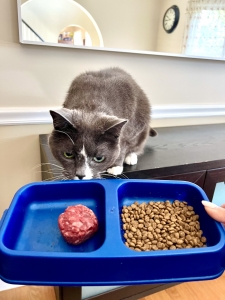
Week 1:
You will only use a pea-sized amount of the new food at each meal. If you are using cans or pouches you can try and store them in the fridge for 2-3 days. However, most cats do not like cold food. Be prepared to throw away a fair amount of cat food in your first 1-2 weeks. If you are using raw food, it becomes a little easier as you can thaw small amounts at a time since many raw cat foods come in convenient little kibble-sized pieces that thaw quickly. Regardless, be sure that when you offer the food to your cat that it is at room temperature.
Simply take a pea-sized amount and spread it thinly and evenly along the entire bottom of the dish you are using. Then, take your normal food (kibble or wet) and put it directly on top.
Notes for Success
At this point, it is important to not mix the food. The small amount in the bottom of the dish is to simply introduce the aroma of the new food, and not necessarily get them to consume it. Serve the meal as you normally would without making a big deal about it. Be sure that you do not hover or stare at your cat – simply go about your activities as you normally would. Cats tend to pick up on energy and stress, and you want to avoid introducing any new variables.
It is normal for your cat to not eat any of the new food or maybe leave and return to the dish a few times before eating their regular food. Again, try not to make a big deal about any new behaviors. They should be used to the smell of the new food within a few days. You may find them even starting to lick the bottom of the bowl and clean the dish by the end of the first 5-7 days. This is a good sign, however, be sure not to increase the new food too quickly as to avoid digestive upset.
Pro Tip:
By day 3-4 of week 1 you may choose to take one teaspoon of warm water into the dish prior to adding your regular food if your cat is showing interest in the new food. This can promote an appetizing smell and help to increase moisture intake. At the same time recognize that this is the most critical week, be sure not to rush! Patience is key!
Week 2:
By this point, your cat should have shown some interest and consumed some of the new food at the bottom of the bowl. At this point, you may increase the wet food to 1-2 teaspoons. Repeat a similar process at week one making sure the food is room temperature, with the new food on top. If your cat has seemed to like the added water, you may continue to add it.
By day 4-5 of week two, you may increase the food another small amount as long as they are consuming what you are already given. Now is the time to consider cutting back on the dry food by a similar volume.
Weeks #3 & #4:
By this time your cat may be only interested in the new food, which is perfectly ok! If this is the case, there may or may not be a little bit of loose stool as a result of the cat’s decision to switch to the new food abruptly. This should subside within a day or two as their system adjusts.
If they are still consuming both foods, then you can continue increasing the new food and decreasing the kibble as each day progresses. As mentioned above, the entire process can be slow and take 3-4 weeks or more!
Sometimes, they will begin to act hungry, and/or vomit bile when switched too quickly because the gastric pH and amount of secretion have not had time to adjust to the new food, especially in the case of switching from dry to wet food or raw food. If this does happen try offering a small “snack” outside of mealtime. This could include freeze dried treats, food or fresh meat.
Pro Tip: Cats tend to not seek out water as dogs do. While there are biological reasons for this, this doesn’t mean that they should not have ample fresh, clean water available – ideally away from their food bowl. If your cat does drink regularly and you feed dry food, do not be surprised to see their water intake decrease as you move to a more moisture-rich food. This is normal!
Summary:
The most important aspect of switching your cat’s food is not to stress! Be patient, and consistent. These practices pay off in time. Be sure to always ensure your cat has access to water. As they transition to a more moisture-rich food you may notice a healthier coat, brighter eyes, and even more energy! Your cat who may not have been too playful prior may have more vigor and energy for exercise – it may be worth investing in a toy or two!
About the Author: Nicole Cammack
Nicole is the founder & owner of multiple-award-winning NorthPoint Pets & Company, in Connecticut, USA. She has completed undergraduate work in biological sciences, business and holds an M.S. in Nutrition. Currently, Nicole is pursuing a PhD in Comparative Biomedical Sciences (Canine Nutrition/Metabolomics) at the prestigious University of Georgia in the USA.
Her background includes experience in the pharmaceutical industry on multiple R&D projects and has had the privilege to learn from leading figures in the human and pet health industries. Nicole has been heavily involved in police canine nutrition within the USA, helping to improve the modern care and feeding of working dogs. Her interests include working dog nutrition, raw feeding, pathogens, metabolomics, and nutrition’s relationship to disease in humans and canines. Her current research involves the exploration of the canine urinary metabolome and the relationship to diet.
Publications: Cammack, N.R., Yamka, R.M., and Adams, V.J. (2021). Low Number of Owner-Reported Suspected Transmission of Foodborne Pathogens From Raw Meat-Based Diets Fed to Dogs and/or Cats. Frontiers in Veterinary Science 8. doi: 10.3389/fvets.2021.741575.
https://www.frontiersin.org/articles/10.3389/fvets.2021.741575/full
Contact:
https://www.linkedin.com/in/nicole-cammack-8400084b/?trk=author_mini-profile_title

Tuesday
Wednesday
Thursday
Friday
Saturday
Sunday
10am – 7pm
10am – 6pm
10am – 7pm
9am – 6pm
9am – 5pm
10am – 4pm
DIY Dog Wash closes one hour prior to store close.
Newsletter Sign-Up
Subscribe to get weekly tips, seasonal advice, and be the first to know about events, new products, sales, and more.
Sidebar Newsletter Sign-Up
NorthPoint Pets is consistently recognized for excellence


